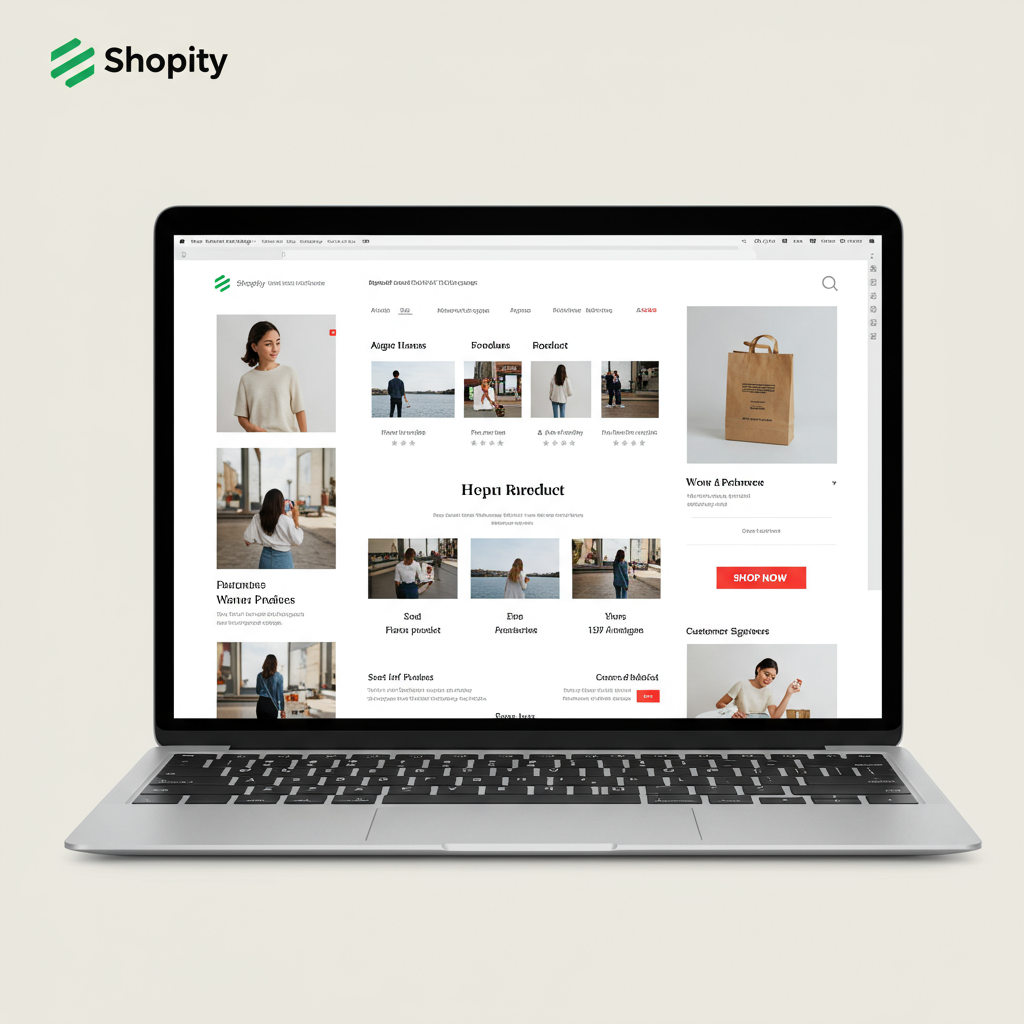Unlock the secrets to a homepage that doesn’t just look good, but actively drives sales and builds customer trust.
As a merchant, I know the feeling: you’ve poured your heart into your products, perfected your branding, and now it’s time to bring it all together on your Shopify store. But where do customers land first? More often than not, it’s your homepage.
Your homepage isn’t just a digital storefront; it’s your brand’s first impression, your most powerful sales tool, and the gateway to your entire product catalog. It’s where you hook visitors, build trust, and guide them towards making a purchase.
I’ve seen countless Shopify stores, and the difference between a struggling one and a thriving one often comes down to the effectiveness of its homepage. It’s not about flashy design; it’s about strategic design that converts.
So, how do we design a Shopify homepage that doesn’t just look pretty, but actively encourages visitors to explore, engage, and ultimately, buy? Let me walk you through my proven approach.
First and foremost, I always emphasize clarity. When a visitor lands on your homepage, they should instantly understand what you sell, who you sell it to, and why they should buy from you. Ambiguity is the enemy of conversion.
Next, trust is paramount. In the vast ocean of online stores, customers need reassurance that you’re legitimate, reliable, and that their purchase will be a positive experience. Your homepage is the first place to establish this.
Finally, every element on your homepage should have a purpose, guiding the visitor towards a clear call to action. Whether it’s “Shop Now,” “Learn More,” or “Discover Our Collection,” the path should be obvious.
Let’s dive into the anatomy of a high-converting homepage, starting with the most crucial section: the hero. This is the first thing visitors see, “above the fold,” before they scroll down.
Your hero section needs a compelling headline that clearly states your unique value proposition. What problem do you solve? What desire do you fulfill? Make it concise and impactful.
Accompanying that headline should be a high-quality, visually stunning image or video. This isn’t just a pretty picture; it should instantly convey your brand’s aesthetic and product type. Think lifestyle shots over plain product images here.
Crucially, your hero section must include a prominent, clear Call-to-Action (CTA) button. This is usually “Shop Now” or “Explore Collections,” leading directly to your best-selling products or main categories.
Moving beyond the hero, I always ensure the navigation is intuitive. Your main menu should be easy to find and clearly categorize your products, making it simple for customers to find exactly what they’re looking for.
Social proof is non-negotiable. I integrate customer reviews, testimonials, star ratings, and even media mentions directly onto the homepage. People trust what other people say more than what you say about yourself.
Consider adding trust badges, such as secure payment icons or guarantees, especially if you’re a newer brand. These small visual cues significantly boost confidence.
Showcase your bestsellers or new arrivals prominently. I recommend a dedicated section with high-quality product images, prices, and a quick “Add to Cart” or “Quick View” option. This immediately highlights your most appealing offerings.
Don’t forget to articulate your Unique Selling Propositions (USPs). What makes your brand different? Is it sustainable materials, handmade quality, exceptional customer service, or a unique product feature? Make it clear.
I often advise clients to include a brief “About Us” or “Our Story” section. People connect with brands that have a narrative. Share your passion, your mission, or what inspired you to start.
An email signup form is vital for lead capture. I place this strategically, perhaps after a few product sections, offering an incentive like a discount or exclusive content to encourage sign-ups.
If you have a blog, feature your latest articles or popular posts. This not only helps with SEO but also positions you as an authority in your niche and provides valuable content to your audience.
Finally, the footer. While often overlooked, I ensure it contains essential links: contact information, shipping and returns policies, privacy policy, and social media links. It’s about providing comprehensive support.
Beyond content, the design itself plays a massive role. I always prioritize visual hierarchy, ensuring the most important elements stand out and guide the eye naturally down the page.
Whitespace is your friend. Don’t clutter your homepage. Give elements room to breathe; it makes the page feel clean, professional, and easier to digest.
Consistency in branding – colors, fonts, imagery – is key. Your homepage should instantly feel like *your* brand, reinforcing recognition and trust.
And, of course, mobile responsiveness is non-negotiable. The vast majority of online shopping now happens on mobile devices, so I always test and optimize the homepage experience across all screen sizes.
Page load speed is another critical factor I monitor. A slow homepage frustrates visitors and leads to high bounce rates. Optimize images and use efficient themes.
Once your homepage is live, my work isn’t done. I constantly analyze its performance using Shopify analytics, heatmaps, and A/B testing. Small tweaks can lead to significant conversion lifts.
What do you think about these strategies? Have you found certain elements to be particularly effective on your own Shopify homepage? I’d love to hear your thoughts.
Remember, your Shopify homepage is a living, breathing entity. It should evolve with your brand and your customers’ needs. By focusing on clarity, trust, and a clear path to purchase, you’ll be well on your way to a high-converting masterpiece.
Implement these strategies, test, iterate, and watch your Shopify store transform into a powerful sales engine. I’m confident these insights will help you build a homepage that truly converts.






